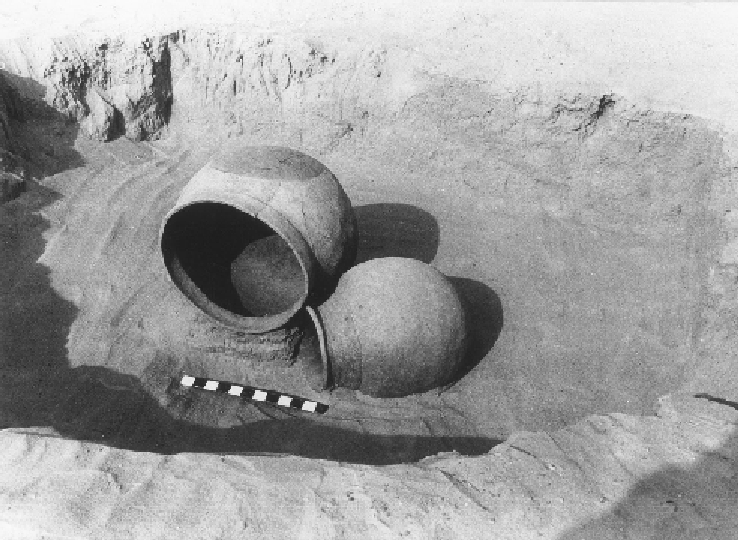Geoscience Reference
In-Depth Information
Figure 17.6. Neolithic pots, Adrar Bous, Aır Mountains, south-central Sahara.
regions (De Heinzelin et al.,
2000
). However, many sites once claimed to be former
butchery sites are no longer considered to be such (Binford,
1981
; Brain,
1981b
). For
a site to be accepted as an unequivocal butchery site, four criteria need to be fulfilled
(Binford,
1981
). First, the animal carcase must be in primary context. Second, the
carcase needs to be associated with the stone tools that were used in the butchery
operation. Third, the bones should show signs of cut-marks, preferably oriented at
right angles to the long axis of the bones and close to the joints between bones,
indicating disarticulation. Finally, the cutting edges of the stone tools should show
signs of microwear consistent with cutting through hide and flesh, and, ideally, traces
of blood residue. Once these criteria are rigorously applied, it becomes clear that
finding a genuine butchery site is a rare event.
In the early stages of human cultural development, our earliest ancestors are prob-
ably best described as opportunistic scavengers rather than hunters of big game. They
were no doubt capable of killing small animals, just as present-day chimpanzees are
occasional hunters of monkeys, but the only initial advantages they hadwhen it came to
obtaining extra protein in the form of meat were the possession of sharp stone flakes
for cutting through the hides of large, dead animals and the ability to operate dur-
ing the heat of the African day, thanks to their ability to remain cool by sweating.

